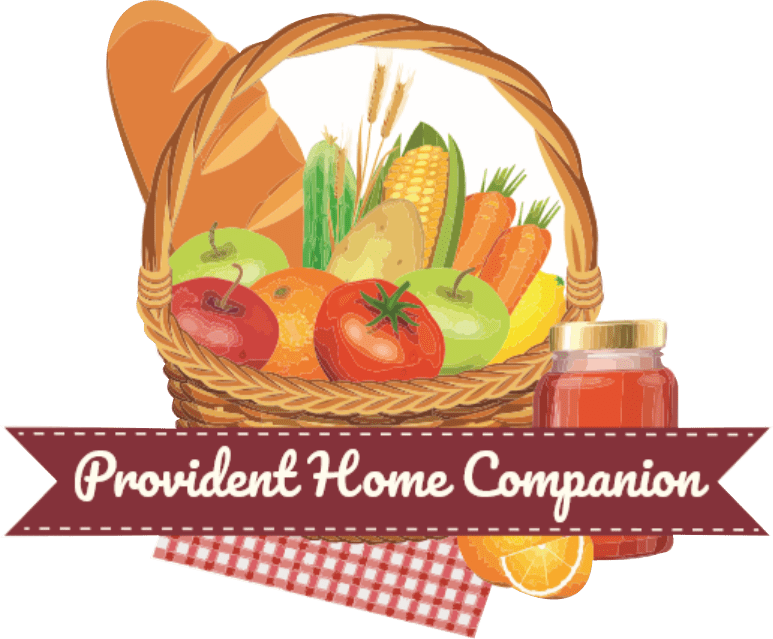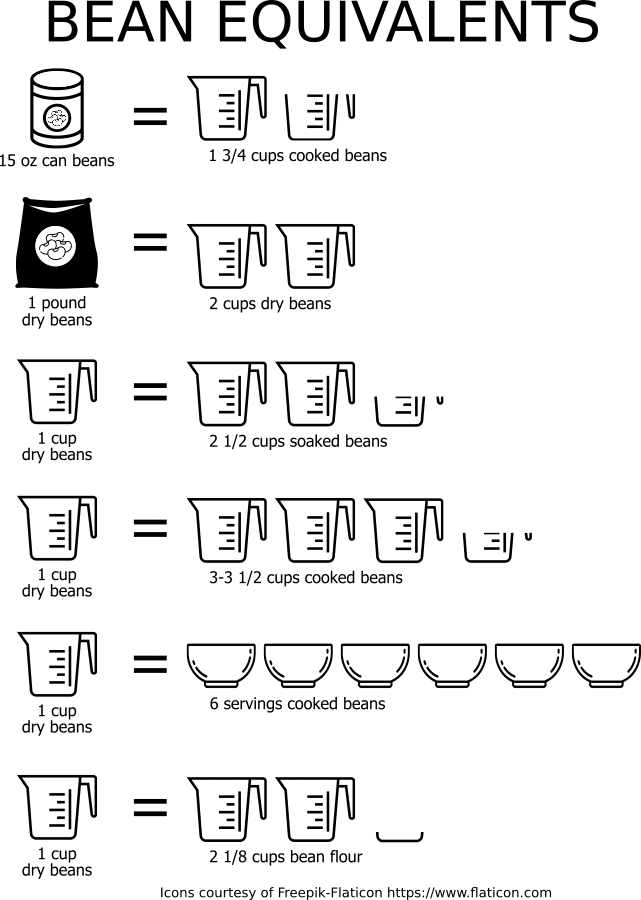

Beans, beans, the magical fruit...
School yard rhyme aside, you really should be eating beans at every meal. They are super high in fiber, protein and lots of vitamins. They are a tasty, inexpensive and filling, making them the ideal food for those trying to keep their food budget under control.
But many are intimidated by the thought of cooking with beans. So their bean-cooking experience is limited to using canned beans. Now using canned beans is convenient. The canned beans still have all that nutrition going for them. But the flavor is not as great and canned beans cost about four times more than dry beans.
For flavor and economy, nothing beats dry beans, so let's take the mystery out of cooking with them.

Re-hydrating beans
The main thing to understand is that dry bean are, well, dry. That's why you can store them forever. But it's also one of the main obstacles to using them every day. Before you can make a meal from beans you have to re-hydrate them. That's really not so hard, and there are several ways to do this.
To properly re-hydrate, you will need 3-4 cups water to each cup of beans. Usually I've found that 3 cups of water is adequate, but be on the safe side and add a little extra water. You can always cook it down or pour it off.
Soaking. This is the most common way to get beans cooked. It's how it been done for centuries. Just put your beans in a bowl, cover them with water. (using the 3:1 or 4:1 ratio of water to beans.) Soak overnight, 8-10 hours. After soaking, they will need another 30-45 minutes of cooking to be tender enough to eat. Super simple, super easy. Really the only drawback to this is that you have to remember to soak the beans the night before.
Fast Soak. If you forgot to soak your beans overnight, you can do what's called a fast soak. Just put the beans and water into a pot with the same 3:1 or 4:1 ratio and bring to a boil. Boil one minute and remove from the heat. Cover and let them soak for one hour. Then proceed to cook as if you had soaked them overnight.
Pressure Cooker. This is my favorite method*. Put the dry beans and water into a pressure cooker. Put the lid on and bring to pressure. Once the cooker is up to pressure, turn down the heat just enough to maintain the pressure and cook for 25-35 minutes. While beans are cooking you can prep all your other ingredients so that by the time the beans are cooked, all you have to do is add the remaining ingredients and dinner is ready in just a few minutes.
*While the pressure cooker is my absolutely favorite method to cook beans, there is one drawback to it, which I'll get to in the next article.
Save more time
The soaking and cooking part is the most time consuming part of using beans. It's why we like to use canned beans: just open the can and you have a meal in no time. There are two ways that you can have the convenience of canned beans with the economy of dry beans.

Freezing. Cook up a big batch of dry beans in the pressure canner. It takes the same amount of time whether you cook one cup or six cups. So why not cook up bunch cups at one time? Cooked beans are almost triple in size compared to dry beans, so see what the capacity of your pressure cooker is and cook as much as your pressure cooker can accommodate. Portion them out in 1-quart freezer bags. I like to put two cups into each bag with some liquid, because that is about the equivalent of a can of beans. Label the bags and freeze them for future meals. I especially like to do this with garbanzo beans. We love hummus at our house, and it's so easy to just whip up a batch of hummus if all I have to do is thaw out a bag of frozen beans.
Canning. If you like canned beans, can up a bunch for yourself. Since beans are a low-acid food they need to be canned in a pressure canner. Canning dry beans is a great first project when you're learning how to pressure can.
You can add ground beef, tomato sauce and chili powder to the beans when you can them and you'll have the best tasting home-canned chili beans for ready-to-eat meals. Even with the time and energy you put in to canning them, it's still very economical compared to buying canned beans at the store.
Whenever you have a recipe that calls for canned beans, use one of these methods and replace those canned beans with dry beans. This chart will help you figure out how to make substitutions for recipes that call for canned beans. You'll save a lot of money, and I think you'll find the flavor and texture are so much better.
Lots of recipes using beans: https://www.providenthomecompanion.com/recipe/using-food-storage-staples